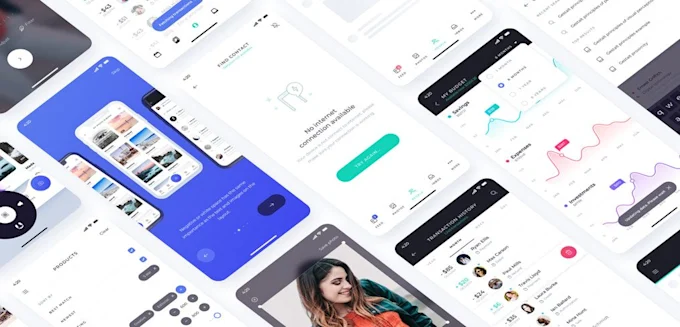Why and How to Create a Shared UI System Across Teams
In modern software engineering, many organizations run multiple products, services, or platforms in parallel. One recurring challenge is maintaining consistency, efficiency, and scalability across user interfaces (UIs). A powerful solution is to build a unified cross-project UI framework — a shared UI system that serves multiple teams and projects.
The Case for a Shared UI Framework
Benefits
- Consistency & Cohesion
When multiple teams use disparate UI components or styles, users may perceive them as disjointed products. A shared framework ensures that all products “feel” unified, improving brand trust and usability. - Efficiency & Reuse
Developers don’t need to reinvent the wheel. Common components (buttons, modals, forms, etc.) are built once and reused. This reduces duplication of effort and accelerates delivery. - Easier Maintenance & Updates
Bug fixes, design tweaks, or accessibility improvements can be applied in one place and propagated everywhere. This ensures that all products benefit from upgrades simultaneously. - Scalability Across Projects
As the organization grows, new teams or new product lines can adopt the same foundation, avoiding divergence or duplication.
Challenges & Trade-offs
- Initial Investment & Complexity
Designing and building a robust, flexible UI framework demands time, forethought, and careful architecture. - Balancing Flexibility vs Restriction
Teams often want customization; if the framework is too rigid, it can stifle innovation. If too loose, you lose consistency. - Governance & Ownership
Who owns the framework? How do you manage versioning, backward compatibility, and contributions across teams? - Adoption Friction
Teams must adopt it, which may require migration, retraining, and sometimes rewriting existing UI code.
Key Principles & Strategies
When building a cross-project UI framework, keep in mind the following guiding principles.
Modularity and Composability
- Build small, self-contained components, so that they can be composed and combined in different ways.
- Avoid monolithic “mega components” that do everything; instead, prefer that components do one job and can be extended or combined.
Theming & Style Abstraction
- Use a theme system (variables, tokens) to abstract colors, typography, spacing, etc. This makes it easier to adapt the style globally or for dark/light modes.
Documentation & Examples
- Good documentation is essential. Include usage, customization examples, best practices, and do’s/don’ts.
- Maintain live examples (storybook, style guide site) so teams can explore and try components interactively.
Testing & Quality Assurance
- Include unit tests, integration tests, and visual regression tests to ensure component integrity.
- Use automated checks (linting, style checking) to enforce consistency.
Backwards Compatibility & Extensibility
- Design so that teams can override or extend behavior where needed, without breaking the base framework.
- Preserve backward compatibility where possible, or offer “legacy adapters” during migration.
A Rough Roadmap to Building One
Here’s a high-level approach to creating a shared UI framework:
| Phase | Activities | Goals |
|---|---|---|
| Discovery & Audit | Inventory existing UI across products, patterns in use, inconsistencies | Understand overlap, pain points, and “hero” components |
| Design Foundation | Define design tokens (colors, spacing, fonts), grid, layout rules | Establish the visual and structural language |
| Core Component Set | Build foundational UI components (buttons, inputs, cards, modals) | Provide reusable building blocks |
| Usage Patterns & Utilities | Create helpers, hooks, utilities (responsive, accessibility) | Aid in common cross-cutting tasks |
| Documentation & Tooling | Build a docs site, live component explorer, migration guides | Improve discoverability, usability, adoption |
| Pilot Adoption | Introduce the framework to one or two internal projects first | Validate, catch issues, iterate early |
| Rollout & Maintenance | Encourage adoption across more teams, establish maintenance governance | Scale usage, maintain health |
Throughout this roadmap, iterate quickly, get feedback from consuming teams, and be willing to pivot on architecture or APIs.
Governance, Collaboration & Ownership
Building the framework is only half the fight — keeping it healthy as more teams use it is perhaps the harder part.
- Single Source of Ownership
One core team should drive the overall architecture, decisions, release cadence, and roadmap. This team must collaborate with consumers and ensure alignment. - Contribution Guidelines & Review Process
Define rules for contributing: how teams propose new features, how pull requests are reviewed, how design decisions are vetted. - Release Cadence & Communication
Plan periodic releases (e.g. monthly). Announce changes, deprecations, and migration plans ahead of time. - Feedback Loops & Roadmap Transparency
Establish communication channels (e.g. Slack, feature requests, monthly syncs) so teams can share pain, request new components, or report bugs. - Deprecation Policy & Legacy Support
When removing or altering APIs, use a deprecation schedule. Provide shims or adapter layers during transitions.
Pitfalls & How to Avoid Them
| Risk | Mitigation |
|---|---|
| Overengineering too early | Start small. Build just enough to validate the shared approach before investing heavily. |
| Rigid design blocks innovation | Allow extension points and customizations so teams can adapt to their domain’s needs. |
| Poor usability or API design | Get early feedback from developer consumers; usability matters for APIs as much as for UI. |
| Neglecting performance & bundle size | Watch for bloat. Use techniques like tree-shaking, lazy loading, code splitting. |
| Fragmented adoption | Incentivize adoption with training, code samples, and migration assistance. Lead by example. |
Conclusion
A unified cross-project UI framework is a powerful investment in consistency, productivity, and maintainability. But it isn’t a one-off technical project — it must be treated as a living, evolving system with careful governance, feedback, and maintenance.
If you’re considering building or migrating to such a framework:
- Start with an audit of existing UI patterns.
- Choose a small pilot to test core components.
- Iterate quickly, and collect feedback.
- Invest in documentation, tooling, and governance early.
- Plan for long-term evolution, backward compatibility, and contributions
